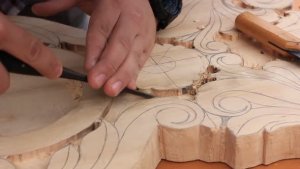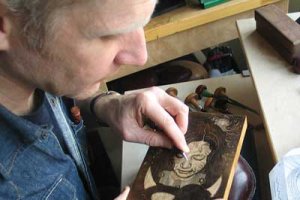There have been thousands of aesthetic techniques which prevailed in the past and are still being sharpened up in this period. Wood engraving is one of those classical techniques.
The wood engraving technique has its origins from Europe where the technique was common in printmaking and letterpress during the 15th to the 16th century. However, during the 17th century, their artistic medium began to decline. Wood engraving technique was used for basic printing press work such as newspaper or almanack. Freehand drawing, during the 18th century, was the most common application of wood engraving beside interpreting details of shadows and light. In this technique, the artist engraves an image or a matrix of images into a block of wood. Some news engravings composed of multiple blocks of wood which divides the work among a number of workers.

A conspicuous contribution in the field of wood engraving was made by a British artist, Thomas Bowick. He developed modern techniques of wood engraving during the beginning of the 18th century until the end of the 19th century. His methods include the introduction of new engraving instruments. He found that a woodcutting knife is not suitable for working against the grains of harder wood. Instead, Bowick used a burin, an engraving tool with V-shaped end. His techniques gradually came into wider use and influenced many artists across Britain and the United States who used to apply the same technique on metals.
The wood used in wood engraving technique was made of boxwood or hardwood such as Lemonwood or cherry. Nevertheless, being highly expensive some modern artists employ substitutes made-up of PVC or resin mounted on MFD, which give almost the similar result.

A number of engraving tools were used to create a perfect piece of art. The V-shaped graver is used for hatching, more flexible tools such as a spitsticker are used to get an undulating line. The round scorper is used to form a curved texture and the flatter ones are utilized clearing larger areas. Though, many modern artists adopt lasers engraving.
By the mid 19th century electroplating was developed. It was used in reproducing a wood engraving on metal. Wood engraving by electroplating resulted in mass production of a single engraving design for sale to print shops without the wear and tear of the original art piece which ended up saving several wood engraving rarities.



